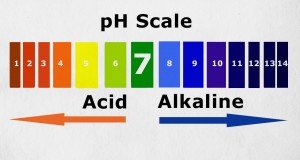The danger of xenoprogesterone: What can we do about it?
(NaturalHealth365) You may have heard about the adverse effects of xenoestrogens found in growth hormones from commercially-produced meats, food preservatives such as BHA, beauty products, pesticides, and even tap water. It is true that if your liver is not properly breaking down estrogen or if you are not methylating or metabolizing estrogen properly, these artificial substances in your body can wreak havoc. And they can lead to breast cancer.
But what about progesterone? Natural progesterone is called the “mother hormone” because it is essential to breast development and readies the breasts for pregnancy. Natural progesterone also helps to balance mental and emotional health and is where many other hormones in our bodies are derived from.
However, xenoprogesterone, or chemical progesterone, can play a role in the development of breast cancer.
What is xenoprogesterone and how does it get into the body?
A while ago, my clients began asking me this very question. I was surprised to find that, like xenoestrogen, xenoprogesterone is a dangerous cancer-causing environmental contaminant.
A 2004 report published by the Office of Environmental Health Hazard Assessment of the California Environmental Protection Agency stated that overproduction of progesterone can lead to “suppressed menstrual cycling and ovulation in women and suppressed spermatogenesis in men.” In animal trials, too much progesterone caused prolonged gestation and “impaired maternal behavior.”
In addition, xenoprogesterone has also been connected with nervous system complications, uterine hyperplasia and tumor growth.
Discover the hiding places for xenoprogesterone
- Substances called endocrine disrupting chemicals, or EDC’s, are found in metals, herbicides, pesticides, and skin care products. They have been known to both mimic and block progesterone, as well as estrogen, at the receptor sites. For example, an increase of progesterone can be found through exposure to the metal cadmium, which is used in paints, batteries and tobacco products.
- Fungicides such as Vinclozolin, commonly used in vineyards and on golf courses, have been shown to up-regulate progesterone receptor expression.
- Synthetically-derived progesterone is given to commercial livestock to quicken weight gain; this toxic load is then transferred to you when you eat this meat. The United States still allows residues of progesterone in beef and lamb of between 3 and 15 parts per billion.
Xenoprogesterone is being found in the water supply
Dauntingly, there are a couple of ways chemical progesterone gets into the waterways and eventually into our drinking supply and that of livestock. First of all, plant sterols from the pulping of pine trees in the logging industry are regularly transformed into progesterone by bacteria in water sediment. A 2002 study found progesterone in 70 of 139 samples tested.
A second way is through the substance medroxy-progesterone. The same California EPA report mentioned earlier found that “a related progestagen, medroxyprogesterone, became a food contaminant for humans and livestock when waste water from a pharmaceutical company containing glucose, and contaminated with the progestagen, was recycled as a sugar source for soft drinks and animal feed.”
Good news: How to prevent xenoprogesterone build up in the body
Preventing the accumulation of ECD’s in your body is one of the most important ways to reduce your overall xeno-hormone levels. Educating yourself and then changing your lifestyle to a more natural one is the best way to make this happen.
Become conscious of what is under your sink, in your bathroom cabinets and in your refrigerator at home. Keep it organic and hormone and preservative-free when comes to the food you eat and the personal care products you put on your body.
Support your liver with nutrients like N-Acetyl Cysteine and milk thistle. Shed toxins through sweating in a sauna (infrared is ideal) at least 3 times per week. In addition, discover the benefits of coffee enemas and fasting.
Both of these modalities have been used for thousands of years to promote vital health and well-being.
The message from conventional medicine – when it comes to breast cancer – is that your own hormones cause cancer and they need to be suppressed through drugs like Tamoxifen. Don’t be fooled.
Remember, your natural hormones are on your side. When in balance, they can contribute to a lifetime of good health, including healthy breasts.
Xeno-hormones (including xenoprogesterone), on the other hand, do not belong in your body and can lead to breast cancer. Keep your hormones properly balanced by eating right and detoxing regularly.
Most importantly, avoid chemical hormones like the ones mentioned above. Doing so will help your hormones naturally do their job and will ensure you a long and healthy life.
About the author:Dr. Veronique Desaulniers (“Dr. V”) is a best-selling author and specialist in Chiropractic, Bio-Energetics, Meridian Stress Analysis, Homeopathy and Digital Thermography. After 30 years in active practice, she decided to “retire” and devote her time to sharing her personal, non-toxic Breast Cancer healing journey with others. Her years of experience and research have culminated in “The 7 Essentials™ “, a step-by-step coaching program that unravels the mystery of healing the body. Her website and personal healing journey have touched the lives of thousands of women around the globe. To get your F.R.E.E. 7-day mini e-course and to receive her weekly inspiring articles on the power of natural medicine – visit: BreastCancerConqueror.com
References:
https://e.hormone.tulane.edu/learning/progestins.html
https://www.neospark.com/images/hormones.pdf
https://www.ncbi.nlm.nih.gov/pmc/articles/PMC1247614
https://www.ncbi.nlm.nih.gov/pubmed/11944670
https://oehha.ca.gov/prop65/hazard_ident/pdf_zip/progeshid5.pdf
https://www.ewg.org/research/dirty-dozen-list-endocrine-disruptors











